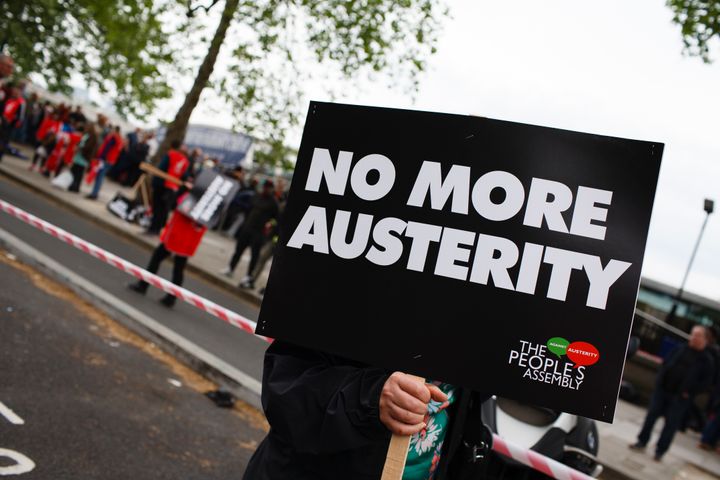
After almost a decade of austerity the verdict is out, austerity has failed our economy. However, when seemingly deliberate choices have made sure austerity hits Britain’s most vulnerable the hardest, it seems accurate to say austerity didn’t fail – it did exactly as intended.
The reasoning behind austerity has been made clear: “to live within our means” and reduce the national debt. Neither of these have been achieved; the Conservatives widely missed their own targets on deficit reduction and over half-a-trillion pounds has been added to the national debt as a result. From this it would be easy to conclude austerity failed by its own measures, however a stubbornness to stick to bad economics combined with the choice to implement austerity for some and not others imply there were other motivations at play.
The bad economics of austerity is immediately clear when you look at when and why austerity is necessary. Government borrowing is only a concern when interest rates begin to rise out of control – this makes the fact austerity coincided with the lowest interest rates in the UK’s history all the more revealing. An estimate for a safe amount of debt is around 140% GDP (in history we’ve done fine with debt above 200%), currently the UK’s debt stands at only 88%. At the very least, these figures imply we have much more room for deficit spending than the Tories let on to.
Buying into the idea that a goal to “live within our means” was the only motivation for austerity gives the Tories too much benefit of the doubt. Once we reconcile “living within our means” with the fact austerity has targeted the most vulnerable and let off some of the most privileged, it begs the question whether austerity was ever about reducing spending.
Ironically, spending (as % GDP) is the same as pre-crisis levels, a period in which the Tories still accuse Labour of overspending. This is mainly due to an increasing amount of compulsory spending on the NHS and pensions along with a period of low growth. Low growth which many blame on austerity itself. But again, it is curious whether austerity was ever about reducing spending. On closer analysis, it seems much more likely that reducing spending was used as an excuse to whittle away the welfare state.
Austerity has pushed public services to breaking point and with this many people who depended on those services have suffered. What makes this fact more agonising is that the bread and butter of austerity, cutting spending and raising taxes, have not been applied equally to everyone in the UK. In fact, many taxes were lowered instead, contradicting what austerity is about. Furthermore, most tax cuts were reserved for the UK’s highest earners, businesses and stockholders. Meanwhile, spending cuts on public services and freezes and limits on benefits only affected the UK’s poorest and most vulnerable.
Austerity has disproportionately affected the poor. The poor lose out most when public services are cut since they are priced-out of alternatives. Along with this VAT is one of the few taxes that has increased and it is well documented that this increases the burden of tax for the poorest the most. With all this considered it seems austerity has been driven by a motivation to decrease the size of the state, to remove government safety nets and this has been done without any consideration for Britain’s poorest.
Austerity didn’t fail. It succeeded in minimising the ability of the government to protect its poorest and most vulnerable citizens. The justifications of deficit reduction, paying debt and “living within our means” were cover-ups, we only have to look at the state the economy has been left in to be sure. Austerity failed Britain’s poorest but that was exactly what it was supposed to do.
